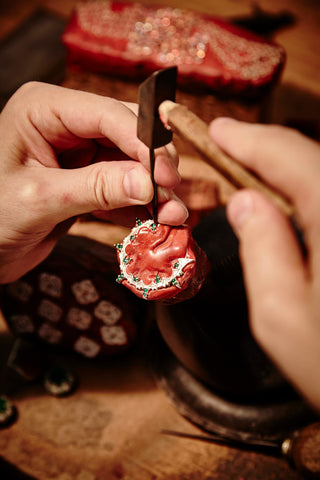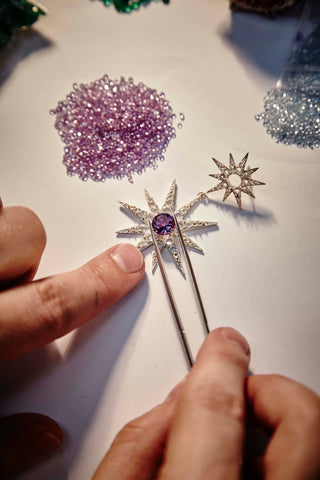The M.C.L Design Blog
Preserving Craftsmanship
The Preservation of Craftsmanship
While preserving craftsmanship may seem out of step with westernized propulsion towards modernization and industrialization, amid heightened consumerism, standing by tradition and design heritage is more important than ever.
 In times of fast fashion and mass production, the threat to traditional handcraft by seasoned artisans is real. With the fear of extinction and a loss of jobs to mechanized production, it is vital to realize the implications of this worrying trend, and endeavor to ensure its reversal.
In times of fast fashion and mass production, the threat to traditional handcraft by seasoned artisans is real. With the fear of extinction and a loss of jobs to mechanized production, it is vital to realize the implications of this worrying trend, and endeavor to ensure its reversal.
MCL Design views traditional craftsmanship as a cultural and design legacy, one that is often passed down from generation to generation, requiring lengthy apprentice and high skill. As industry lurches ever forward with automated production, this cultural heritage, with its techniques, intrinsic historic value and unique skills, is in danger of being lost, should efforts not be made to sustain, revive and allow this legacy to survive.
There are measures in place around the world to ensure the preservation of historic buildings and artifacts, archaeological sites and nature reserves, and other tangible assets of the like, but few places or administrations champion the cause of traditional craftspeople and their cultural capital. It is, therefore, left to corporations and individuals to tackle this issue, as a matter of morality and responsibility to cultural heritage.
In Thailand, for example, modernity and tradition live side by side, and even the most remote communities are encouraged to engage in traditional practices that showcase a region’s cultural heritage. Handmade products are crafted throughout the land by talented artisans, dedicated to the quality of their products. Such attempts to encourage and safeguard craftsmanship, ensure longevity of craft, and allow communities to sustain themselves and their skills.
When an item, such as fine jewelry, is created by hand, there is a charm to and reassurance in knowing that your piece has passed through hands, which are dedicated to the craft, as opposed to rolling off automated machinery. A human has lovingly applied their skill, into shaping a wearable art piece. Sculpting MCL Design jewelry by hand, carefully setting stones, also ensures that each item is ethically produced and characteristically unique, unlike mass production. The result is timeless art and sculpture versus ephemeral accessories.
 MCL Design Founder and CEO Matthew Campbell Laurenza strives to establish relationships with craftspeople and material suppliers, across the globe, who share his concerns for quality, integrity and the sustainability of his craft. In addition, providing a fair wage for skilled artisans ensures their livelihoods, allowing this precious resource, in the creation of fine jewelry, not to be lost or abandoned, in the passage of time.
MCL Design Founder and CEO Matthew Campbell Laurenza strives to establish relationships with craftspeople and material suppliers, across the globe, who share his concerns for quality, integrity and the sustainability of his craft. In addition, providing a fair wage for skilled artisans ensures their livelihoods, allowing this precious resource, in the creation of fine jewelry, not to be lost or abandoned, in the passage of time.
It is no secret that the fashion industry is a large-scale world polluter, with an enormous carbon footprint. For MCL Design, this type of investment in sustaining cultural heritage, by its very nature, allows the company to operate with a less burdensome impact on the environment: smaller batches, the entire production process in a small space and no heavily polluting machinery, as well as repurposing, reclaiming and recycling materials, leading to less waste overall.
By focusing on preserving craftsmanship, MCL Design prides itself on more environmentally-friendly design, the unique identity of handmade pieces, bespoke attention to detail, ethical treatment of people, respect for artisanal skill, responsible use of resources and a ‘cherishable not perishable’ attitude.



